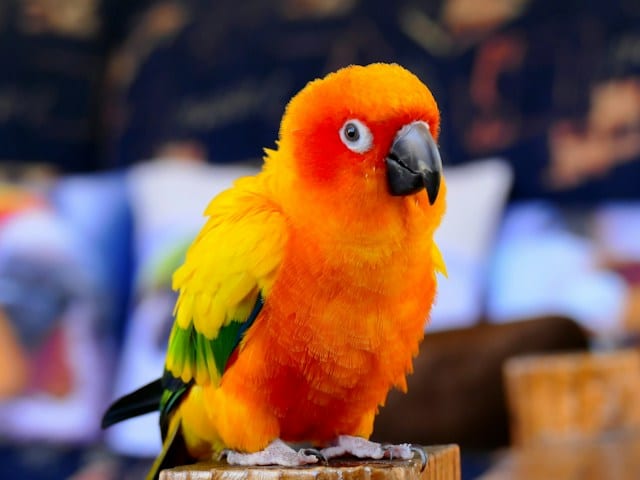Who among us bird lovers hasn’t contemplated expanding our avian family? The thought of having a variety of bird species cohabiting harmoniously in our homes is nothing short of a delightful vision. However, a crucial question pops up when considering this, especially regarding parrots: Can parrots live safely with other bird species? To answer this, we’ll delve into various factors that can impact the coexistence of parrots with other bird species, including their behavior, care, and the environment they’re kept in.
Understanding the Parrot Personality
Parrots are known for their vibrant personalities. They are intelligent, social, and curious creatures that require significant levels of interaction and mental stimulation. As a result, the presence of other birds in their environment can positively or negatively affect their behavior.
A lire en complément : What are the best low-light plants for aquariums?
Some parrot species are more territorial than others, which can result in aggressive behavior towards new birds entering their space. Parrots might feel threatened or jealous, leading to conflict. Therefore, before introducing a new bird species to your pet parrot, it’s crucial to understand your parrot’s personality and how it might react.
On the other hand, parrots can also develop friendly relationships with other bird species. They may enjoy the company and engage in social activities such as preening and playing together. Some parrots may even bond with birds of a different species, providing them with companionship and reducing feelings of loneliness.
Lire également : How to create a safe and comfortable sleeping area for pets who prefer to sleep outdoors?
Cage Setup and Aviary Considerations
The cage or aviary setup is another crucial aspect to consider when keeping parrots with other bird species. Parrots, being larger and more robust than many other bird species, may require more space and sturdy perches. This doesn’t mean they can’t share a living space with others; it just means you will need to be mindful of each bird’s needs.
First, ensure the cage or aviary is large enough to accommodate all of your birds comfortably. This should allow each bird to stretch their wings fully without touching the cage sides or other birds. If the space is too cramped, it can lead to stress and conflict among the birds.
Ensuring the cage has multiple feeding and drinking stations is also important. This can prevent competition over food and water and reduce potential conflicts. Also, using visual barriers such as plants or decorations can help give each bird a sense of privacy and their own territory within the shared space.
Bird Health and Care Responsibilities
When keeping parrots with other bird species, you need to be aware of the health and care responsibilities associated with each type of bird. Parrots and other bird species may have different dietary requirements, need varying levels of social interaction, and could potentially transmit diseases to each other if not properly cared for.
Parrots, for instance, need a diverse diet consisting of fresh fruits, vegetables, and specialized parrot pellets. Other birds may require different types of food to stay healthy. Some bird species may be prone to specific diseases that parrots are not, and vice versa. You must be aware of these potential health risks and take preventative measures to ensure each bird’s health and wellbeing.
Parrots, Other Birds, and Non-Avian Pets
While it’s essential to know if parrots can live safely with other bird species, it’s equally important to understand how they might interact with non-avian pets. Cats, in particular, may pose a threat to your feathered friends. A cat’s natural hunting instincts can kick in when they see a bird, making your pet birds potential prey.
If you have cats or are considering getting one, you need to take measures to ensure the safety of your birds. This may involve keeping the birds in a secure cage or aviary that a cat can’t access, or making sure the birds and cats are never allowed in the same room unsupervised. Remember, it’s not just about the physical safety of your birds – even a well-behaved cat can cause stress and anxiety for birds simply by being nearby.
To sum up, parrots can live safely with other bird species, provided that you understand each bird’s needs, behaviors, and health requirements. It requires patience, knowledge, and a willingness to adapt your pet care routine to accommodate each bird’s needs. As bird lovers, the joy and satisfaction of seeing our feathered friends flourish and perhaps even form unique interspecies friendships make all the effort worth it.
Case Study: Blue Gold Macaw and Cockatiels Living Together
A case study that helps shed light on the dynamics of mixed species cohabitation involves a Blue Gold Macaw and a group of Cockatiels. The Blue Gold Macaw is a type of large parrot known for its powerful beak, intelligence, and sociability. The Cockatiel, on the other hand, is smaller, quieter, and generally more timid.
In this case, the owner implemented several strategies for cohabitation. The birds were introduced slowly, allowing both the macaw and the cockatiels to get used to each other’s presence from a safe distance. The bird cage was spacious, with separate areas for feeding and resting, reducing the chances of territorial disputes.
One major challenge was the Macaw’s powerful beak. Large parrots like the Blue Gold Macaw can accidentally injure smaller birds even during play. To address this, the owner made sure to monitor their interactions, intervening when necessary to ensure the cockatiels’ safety.
Nevertheless, the birds slowly began to accept each other. Despite the size difference, they started to interact more, demonstrating that with careful planning and patience, parrots can cohabit with other bird species successfully. This case study emphasizes that understanding your birds’ individual needs and behaviors is crucial when introducing new birds into the parrot cage.
The Essence of Keeping Parrots with Other Bird Species
In conclusion, the question of whether parrots can live safely with other bird species is not a simple yes or no. The answer depends on a variety of factors, including the specific parrot species, the other birds involved, the environment they’re kept in, and the level of care and attention provided by the owner.
However, it’s undeniable that with careful consideration, preparation, and monitoring, it is possible to successfully keep birds of different species together. You may need to make alterations to the bird cage, adjust feeding schedules, or set boundaries for interaction. Remember, the safety of your pet birds should be prioritized at all times.
Parrots, with their vibrant personalities and intelligent nature, can indeed live harmoniously with other bird species. They may even form close bonds and provide companionship to each other.
Similarly, understanding the dynamics between parrots and other pets, such as cats, is also essential. Precautions must be taken to prevent your avian companions from becoming prey animals.
It’s a rewarding journey to witness your pet parrot build relationships with other birds and pets, as long as their wellbeing is not compromised. It’s all about balance, respect for their individual needs, and, most importantly, love for your diverse, feathered family.











